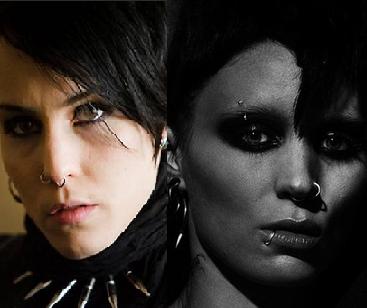Writer: Geoff Johns
Penciler: David Finch
Inker: Richard Friend
Colorist: Sonia Oback
Publisher: DC Comics
One week after DC and Geoff Johns wrap up “Trinity War”, they plunge headfirst into another event Forever Evil. The first issue skips around from location to location and doesn’t have much of a plot, but Johns and artist David Finch create a world that is the DC Universe in appearance, but something is a little off. This strangeness creates a high level of tension from about the fourth page, but the middle is mostly exposition and a twisted take on the “gathering the team” trope. But Forever Evil has a strong beginning and ending with some gallows humor to relieve the tension. It might lack the big action of the first issue of “Trinity War”, but it makes up for the lack of superhuman brawls with an emphasis on character emotions and musings on the nature of evil. David Finch’s art isn’t spectacular, but his use of smaller panels does a good job illustrating the extent of the Crime Syndicate’s powers.
Johns’ script helps bring out the tension and fear in every scene beginning with his characterization of Lex Luthor. Even in his battles with Superman and the Justice League, Luthor always manages to keep his head. However, the Crime Syndicate is a different story. He goes from threatening businessman’s Thomas Kord’s family and holdings to mewling in the ruins of Metropolis and asking for Superman to save him. The opening scenes of Forever Evil #1 are effective and fast-paced. Finch uses quick cuts between panel to show the ease that the Crime Syndicate wreaks havoc upon the world. Having one of the smartest and most ruthless villains in DC Universe comment on these scenes and the Syndicate’s action adds even more potency to this issue. Johns even has Ultraman use a similar quote about “survival of the fittest” that Luthor used when threatening Kord to reveal the sheer level of danger and evil in the DC Universe.
In contrast to Luthor is Nightwing. Dick Grayson is the true heart of the DC Universe with his positive attitude and relationships with Batman, the Teen  Titans, and Justice League. But every panel he appears in (with the exception of the first page) is heartbreaking. Finch’s smaller panels reveal in gory detail the emotional and physical done to this character. Johns uses Nightwing as a foil to Luthor and to reveal how deep the DC Universe has plunged into darkness. His scenes may be controversial because of their brutal nature and the character’s loyal fanbase. Finch’s portrayal of Barbara Gordon is also controversial. He uses the controversial “brokeback” pose in one of her scenes. This panel is a negative artistic moment in a book which actually has decent art, especially when the various cities and prisons are destroyed.
Titans, and Justice League. But every panel he appears in (with the exception of the first page) is heartbreaking. Finch’s smaller panels reveal in gory detail the emotional and physical done to this character. Johns uses Nightwing as a foil to Luthor and to reveal how deep the DC Universe has plunged into darkness. His scenes may be controversial because of their brutal nature and the character’s loyal fanbase. Finch’s portrayal of Barbara Gordon is also controversial. He uses the controversial “brokeback” pose in one of her scenes. This panel is a negative artistic moment in a book which actually has decent art, especially when the various cities and prisons are destroyed.
Despite all this buildup with Luthor and Nightwing in Metropolis and Gotham respectively, the middle half of Forever Evil #1 drags in places. Most of the middle act is a speech by Ultraman to the assembled villains of the DC Universe. This gives Finch an excuse to draw a wonderful two page spread of every major DC villain though. However, the speech itself is overwrought. Ultraman doesn’t plan for the villains to do anything, he just threatens them (and acts on these threats) and basically says, “Evil rules” in an extended manner. This long speech kills the suspense in the earlier pages, but is broken up by some character interactions that highlight the colorful nature of DC villains. Penguin and Bane compare notes on the Joker, Cheetah and Gorilla Grodd share their disdain for humans etc. This scene also falls flat because the phrase “The world is ours” is repeated a little too much, and Ultraman re-introduces the Crime Syndicate even though the opening pages have shown these characters’ power sets and revealed a little about their personalities. But the humor from the other villains, especially Captain Cold and the Rogues, counterbalances the melodrama. These light moments along to a few plot twists and an ending that affects the DC Universe on a larger scale helps the issue escape being a bad comic. Forever Evil #1 serves as an effective introduction to the Crime Syndicate and the DC Universe’s new dark status quo.






